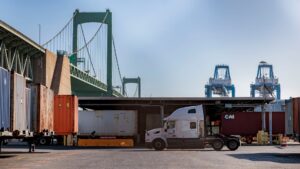Can Tariffs Replace Income Tax? An In-Depth Look
The conversation around tariffs and their role in U.S. fiscal policy has intensified in recent years, especially in the wake of President Donald Trump’s proposal to potentially replace federal income tax with an "all tariff policy." While this may sound appealing at first glance—after all, who wouldn’t want a system that simplifies taxes?—the reality is far more complicated. Here at Extreme Investor Network, we break down the implications of these policies on personal finance and the overall economy.
The Tariff Proposal: Reality Check
During his tenure, President Trump suggested that an extensive tariff regime could replace the need for income tax altogether. While the idea initially caught the interest of many, experts in the field quickly voiced concerns. Alex Durante, a senior economist at the Tax Foundation, stated succinctly, “It’s just not a realistic proposal.”
In the 19th century, tariffs contributed significantly to federal revenue. However, our modern spending levels and economic infrastructure have evolved. Today, the U.S. government allocates approximately 22.7% of its Gross Domestic Product (GDP) toward spending— a stark increase from when tariffs were a fiscal cornerstone.
Why Tariffs Alone Won’t Work
While it’s true that tariffs can generate revenue—$77 billion was collected in tariffs during fiscal year 2024—they typically account for only about 1.57% of total federal revenue. This highlights a crucial point: tariffs alone cannot sustain the vast financial needs of 21st-century governance.
The Math Is Unfavorable
Erica York, a vice president of federal tax policy with the Tax Foundation, points out a glaring issue: “The math doesn’t work.” To replace the income tax, which collected about $2.2 trillion from individual taxpayers in 2021, the U.S. would need to impose astronomically high tariffs on a limited base of imports. This raises a fundamental concern—higher tariffs encourage consumers to purchase fewer imported goods and potentially lead to retaliatory tariffs from trading partners, further shrinking the tax base.
Experts Kimberly Clausing and Maurice Obstfeld from the Peterson Institute for International Economics elaborate on this issue, emphasizing that while trying to reach Trump’s ambitious revenue goals through tariffs, the outcomes could be counterproductive. As tariff rates rise, imports would likely fall, negating potential benefits.
The Broader Economic Impact
Beyond the mathematics of tariffs versus taxes, there are broader economic ramifications to consider. The use of tariffs can lead to increased prices for consumers, essentially serving as a hidden tax that hits lower-income families the hardest.
Historically, while tariffs have been used to protect domestic industries, they can also stifle competition and innovation. Rising costs for imported goods lead to inflationary pressures, reducing consumers’ purchasing power. As a result, the broader economy could suffer, leading to a domino effect impacting employment, investment, and ultimately economic growth.
Conclusion: A Call for Real Solutions
At Extreme Investor Network, we advocate for informed discussions and practical solutions in personal finance. The reality is that replacing income tax with tariffs is not merely an alternative but a risky gambit with significant downsides. As individuals navigating such financial landscapes, it’s essential to stay informed about these discussions and their potential implications on personal and national finances.
Instead of relying solely on tariffs, we encourage dialogue about comprehensive tax reforms that include simplifying the existing tax code, closing loopholes, and developing innovative approaches to taxation that can sustain modern governmental spending without hamstringing consumers and the economy.
Engage with us to explore more about optimizing your personal finances and understanding the economic landscape. Remember, informed decisions pave the way for financial security and empowerment.

